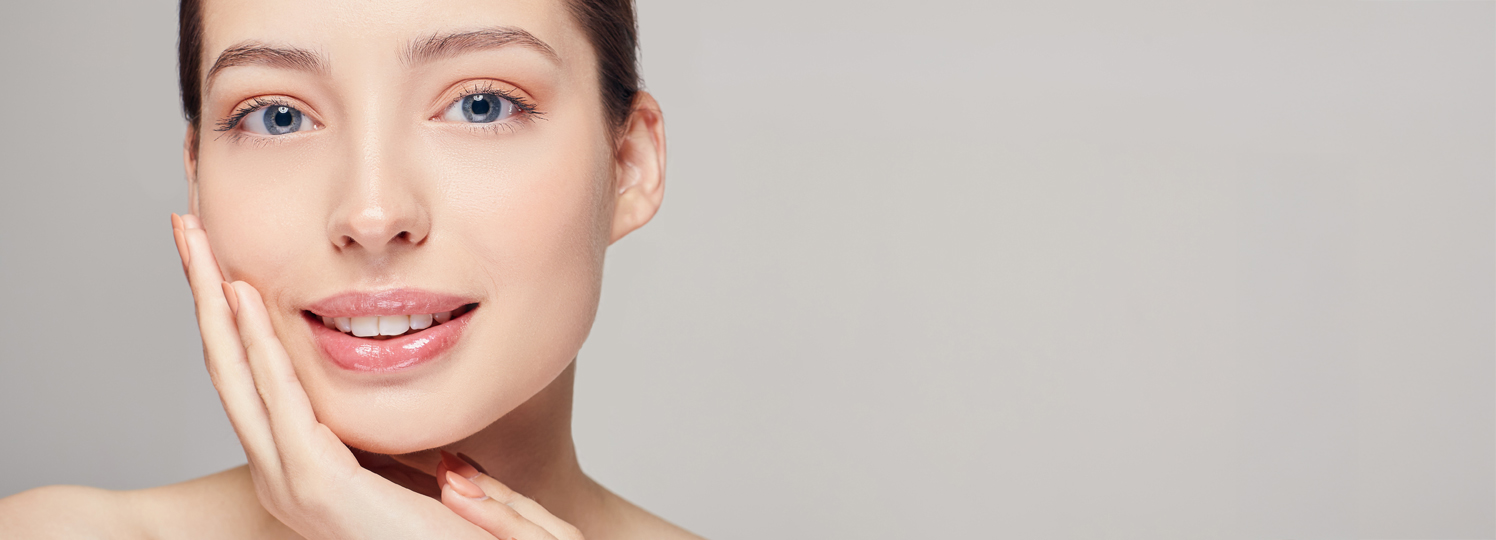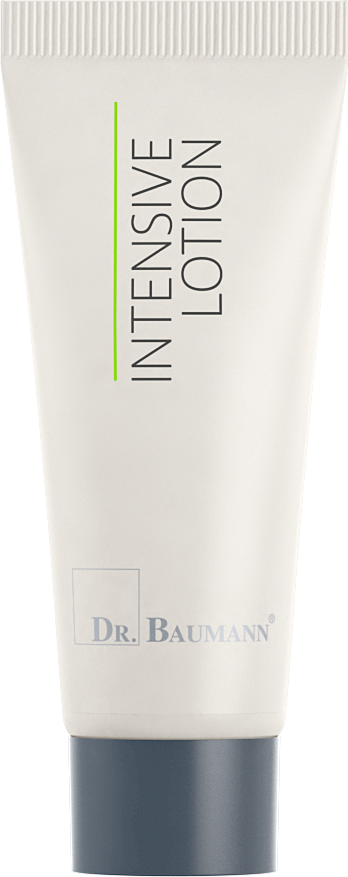

Facial Care



Facial Care
The fluid texture and the proportion of evening primrose oil makes this an ideal alternative for intensive care of dry, fragile facial skin when other creams are too paste-like, or for particularly intensive nourishment of dry skin on the body. Best suited for facial and body massage.
Application: To achieve the best success with DR. BAUMANN facial care, before applying an appropriate DR. BAUMANN cream, one of the LIPOSOME MULTI ACTIVE products (see basic care) should be applied.
10 ml Tube
Art.-Nr. 1512
75 ml Tube
Art.-Nr. 1912
Aqua, Ethylhexyl Cocoate, Butylene Glycol, Oenothera Biennis Oil, C18-36 Acid Triglycerides, Urea, Sodium Lactate, Polyglyceryl-2 Dipolyhydroxystearate, Diisostearoyl Polyglyceryl-3 Dimer Dilinoleate, D-mixed-Tocopherols, Retinyl Palmitate, Sodium Ascorbyl Phosphate, Lactic Acid, Allantoin, Ormenis Multicaulis Flower Oil, Magnesium Sulfate
Aqua:
Water. It accounts for around 65% of the weight of the human body and is therefore of fundamental importance for bodily functions, including those of the skin. In many cosmetic products (aqueous solutions, cleansers, emulsions), water is the ingredient with the largest proportion of the formulation in terms of quantity and forms the basis of the aqueous phase in emulsions. Water is a good solvent for polar (hydrophilic) substances such as alcohols, water-soluble vitamins or salts. For use in cosmetic products, the water used is generally pre-treated to remove microorganisms that could lead to spoilage of the product or dissolved salts that may impair the stability of emulsions or gels (sterilization and desalination).
Ethylhexyl Cocoate:
Wax ester that spreads well and is non-greasy, made from coconut oil.
Butylene Glycol:
Solvent with moisturizing effect on the skin, very good compatibility, should be preferred to propylene glycol in products used daily
Oenothera Biennis Oil:
Evening primrose oil: One of the most valuable oils for skin care. With its high concentrations of highly unsaturated fatty acids linoleic acid and gamma-linolenic acid, it is effective against dry, rough and flaky skin. It is moisturizing, has a soothing effect on the skin, increases blood circulation and counteracts the formation of pimples. In many people, the metabolic step from linoleic acid to gamma-linolenic acid is disturbed, which in extreme cases results in neurodermatitis. This is why evening primrose oil is also very popular in naturopathy.
C18-36 Acid Triglycerides:
High-melting wax made from natural raw materials, consistency enhancer
Urea:
The water-soluble urea is used in numerous cosmetic products. Urea is a component of the natural moisturising factors of the horny layer (content between 7 % and 12 %; up to half lower in chronically dry skin) and has a high water-binding capacity. It contributes to sustained moisturisation of the skin and reduces transepidermal water loss. Urea has a keratoplastic effect, in higher concentrations it has a keratolytic effect and is therefore also used in the care of skin affected by psoriasis or atopic dermatitis (neurodermatitis). Urea is also able to reduce the irritating potential of surfactants.
Sodium Lactate:
Sodium salt of lactic acid: Has a moisturising effect on the skin, with the physiological pH value of the skin averaging 5.5. Important component of the natural moisturising factor (NMF) and the acid mantle of the skin.
Polyglyceryl-2 Dipolyhydroxystearate:
W/O emulsifier, is made from vegetable fats.
Diisostearoyl Polyglyceryl-3 Dimer Dilinoleate:
Emulsifier for W/O emulsions, is obtained from the renewable, vegetable raw materials glycerine and fatty acids, very good skin compatibility
D-mixed-Tocopherols:
Is the name of a mixture of natural tocopherols (vitamin E; D-alpha-, beta-, gamma- and delta-tocopherol). Vitamin E is the most important skin protection vitamin, which protects the skin from UV rays and oxygen radicals.
Retinyl Palmitate:
Is the storage form of vitamin A, which is converted into free vitamin A in the skin. It stimulates cell division and therefore has a strong regenerative effect, particularly on pre-aged skin and with prolonged use. Studies have even shown an increase in the collagen content of the skin, a slight reduction in wrinkles and an increase in skin elasticity.
Sodium Ascorbyl Phosphate:
Highly effective antioxidant and vitamin C donor for the skin
Storage form of vitamin C as a phosphate ester. Water-soluble vitamin with antioxidant properties. It acts against cell-damaging free radicals, protects unsaturated fatty acids from oxidation, is essential for the formation of collagen and thus the entire connective tissue as well as for the function of the immune system. Together with vitamin E, it is very suitable for preventing the formation of nitrosamines.
Lactic Acid:
Lactic acid. Occurs as a metabolic product in the body and on the skin, has a peeling effect on the horny layer in higher concentrations and at a low pH value of 2 to 3, supports the moisture content in buffered form (physiological pH value of the skin approx. 5.5) and preserves the skin's protective acid mantle.
Allantoin:
Allantoin is a body-identical, water-soluble substance and is chemically related to urea. It is found in various plants but is now produced synthetically for use in cosmetics. Its most important property is the stimulation of new cell formation. It promotes collagen formation, skin regeneration and wound healing, stimulates desquamation, smoothes the skin and can have a soothing effect on atopic dermatitis.
Ormenis Multicaulis Flower Oil:
Oil from Moroccan camomile: Has an anti-inflammatory, wound-healing and calming effect.In contrast to German chamomile, no allergies are known
Magnesium Sulfate:
Epsom salt, stabilizer in W/O formulations